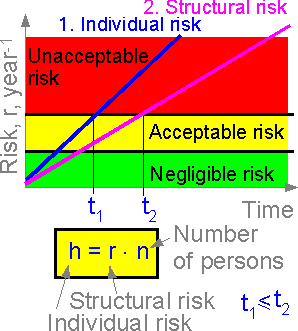 Structural risk is connected with individual and social risks. Individual risk is equal to structural risk times the number of structural elements and number of people at risk.
Structural risk is connected with individual and social risks. Individual risk is equal to structural risk times the number of structural elements and number of people at risk.
The figure shows the structural and individual risks for a space shuttle. The individual risk of the crew member is the most important consideration, service with unacceptable individual risk (t > t1) cannot be recommended. The more crew members, the higher the individual risk.
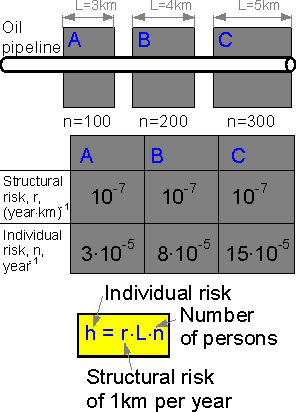 If an oil pipeline passes near a settlement the structural risk for L kilometers of the pipeline is equal to L times the structural risk of one kilometer. The more people in the settlement, the bigger the individual risk.
If an oil pipeline passes near a settlement the structural risk for L kilometers of the pipeline is equal to L times the structural risk of one kilometer. The more people in the settlement, the bigger the individual risk.
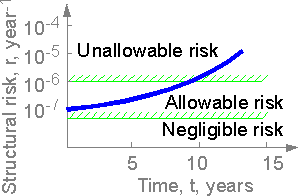 The structural risk of a severe accident of a structure can increase with time. If the risk exceeds the allowable value from corresponding industry standards the management of long-time service should be considered.
The structural risk of a severe accident of a structure can increase with time. If the risk exceeds the allowable value from corresponding industry standards the management of long-time service should be considered.
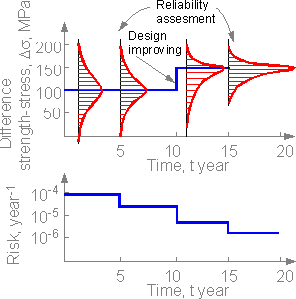 Another situation where a unique engineering structure is assessed for safety and improvements were made in the structural elements. There are no severe accidents. Safety assessments, knowledge of the likelihood of failure scenarios, and the design improvement can decrease risk. The more knowledge the smaller the risk.
Another situation where a unique engineering structure is assessed for safety and improvements were made in the structural elements. There are no severe accidents. Safety assessments, knowledge of the likelihood of failure scenarios, and the design improvement can decrease risk. The more knowledge the smaller the risk.
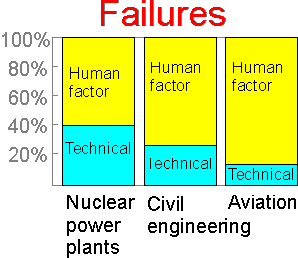 The human factor plays a significant role. Nuclear power stations have backup systems and special nondestructive testing and inspections that decrease the risk.
The human factor plays a significant role. Nuclear power stations have backup systems and special nondestructive testing and inspections that decrease the risk.
 Statistics can help choose a profession with lowest risk. Fortunately, other factors such as salary and interest also affect the decision.
Statistics can help choose a profession with lowest risk. Fortunately, other factors such as salary and interest also affect the decision.
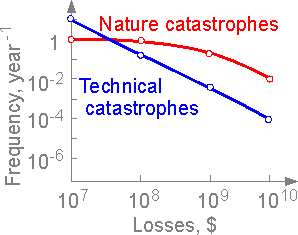 Losses due to natural catastrophes such as tornadoes, earthquakes, forest fire, etc. at level 1010 are more valuable. More losses are connected with natural catastrophes than technical disasters.
Losses due to natural catastrophes such as tornadoes, earthquakes, forest fire, etc. at level 1010 are more valuable. More losses are connected with natural catastrophes than technical disasters.
 2015-08-13
2015-08-13 322
322








